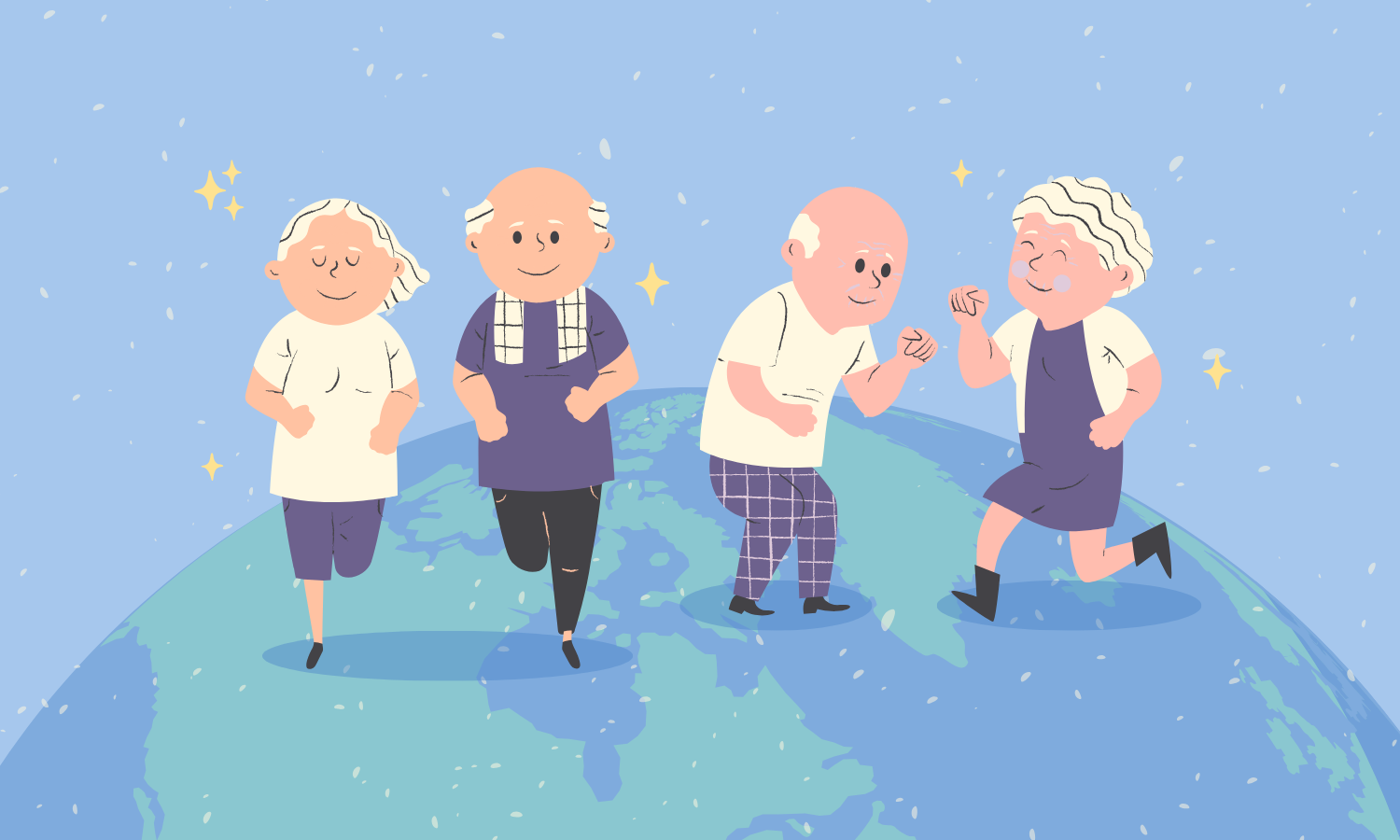
A new study has highlighted a shift in focus from extending life to improving quality of life - Photo: Skye Wealth
According to SciTechDaily , a new study has highlighted a shift in focus from extending lifespan to improving quality of life, through advances in aging science.
The limits of human life span
Life expectancy saw significant increases throughout the 19th and 20th centuries, thanks to healthier diets, medical advances, and other improvements in quality of life. However, after nearly doubling in the 20th century, the rate of increase has slowed significantly over the past three decades, according to a new study led by the University of Illinois Chicago.
Despite frequent breakthroughs in medicine and public health, research shows that average life expectancy at birth for the world's longest-lived populations has increased by just 6.5 years on average since 1990.
This rate of improvement is much lower than the expectations of some scientists that life expectancy will increase rapidly this century and that most people born today will live past 100.
A paper in the journal Nature Aging titled " The Impossibility of Significant Human Life Extension in the 21st Century " provides new evidence that humans are approaching a biological limit to longevity.
The biggest gains in longevity have come through successful efforts to combat disease, according to lead author S. Jay Olshansky of the UIC School of Public Health. That means the effects of aging are the main obstacle to adding more years to life.
“Most people are living to old age today thanks to the time that medicine has bought,” said Olshansky, a professor of epidemiology and biostatistics. “But these temporary medical solutions are adding fewer years of life, even though they are happening at a faster rate, implying that the period of rapid life expectancy gains is now over.”
This also means that adding years to life by reducing disease could be harmful, if the extra years are not healthy years, Olshansky added.
“We should shift our focus to efforts to slow aging and extend healthy life,” he said. Healthy life is a relatively new metric that measures the number of years a person lives in good health, rather than simply living.
The analysis, conducted with researchers from the University of Hawaii, Harvard and UCLA, is the latest chapter in a three-decade debate about the potential limits of human longevity.
In 1990, Olshansky published an article in the journal Science , arguing that humans were approaching a lifespan limit of around 85 years and that the most significant improvements had already been made.
Others predict that advances in medicine and public health will accelerate 20th-century trends into the 21st century.
Life expectancy increases will continue to slow
Thirty-four years later, evidence reported in the Nature Aging 2024 study supports the idea that increases in longevity will continue to slow, as more people are exposed to the adverse and irreversible effects of aging.
The study looked at data from eight countries and territories with the highest life expectancy, including Hong Kong and the United States, one of the few countries and territories that saw a decline in life expectancy over the study period.
“Our results overturn the conventional view that the natural human lifespan lies ahead – a lifespan beyond the current level,” Olshansky said. “Instead, it is already behind us – somewhere between 30 and 60 years ago. We have shown that modern medicine has only brought about small improvements in lifespan, despite medical advances occurring at a rapid pace.”
Even though many people may reach 100 and beyond this century, those cases will still be the exception and will not significantly raise average life expectancy, Olshansky said.
This conclusion flies in the face of products and industries like insurance and asset management, which increasingly base their calculations on the assumption that most people will live to 100.
“This is very bad advice because only a small percentage of the population will live that long this century,” Olshansky said.
However, the findings do not rule out the possibility that medicine and science could deliver further benefits, he said. The authors argue that there may be more immediate potential in improving quality of life in old age than in extending lifespan.
More investment is needed in research into the biology of aging, which may hold the seeds of the next wave of health and longevity.
“This is a glass ceiling, not a brick wall,” Olshansky said. “There is still a lot of room for improvement, like reducing risk factors, working to eliminate disparities, and encouraging people to live healthier lives — all of which can help people live longer and healthier lives.”
Source: https://tuoitre.vn/con-nguoi-dang-tien-gan-den-gioi-han-cua-tuoi-tho-2024101416100095.htm





![[Photo] Closing of the 11th Conference of the 13th Central Committee of the Communist Party of Vietnam](https://vstatic.vietnam.vn/vietnam/resource/IMAGE/2025/4/12/114b57fe6e9b4814a5ddfacf6dfe5b7f)

![[Photo] Overcoming all difficulties, speeding up construction progress of Hoa Binh Hydropower Plant Expansion Project](https://vstatic.vietnam.vn/vietnam/resource/IMAGE/2025/4/12/bff04b551e98484c84d74c8faa3526e0)















![[Video] First time in Vietnam: Successful implantation of 3rd generation partial artificial heart](https://vstatic.vietnam.vn/vietnam/resource/IMAGE/2025/4/12/8817412224094c68ba2c744b7bd5cfea)






































































Comment (0)